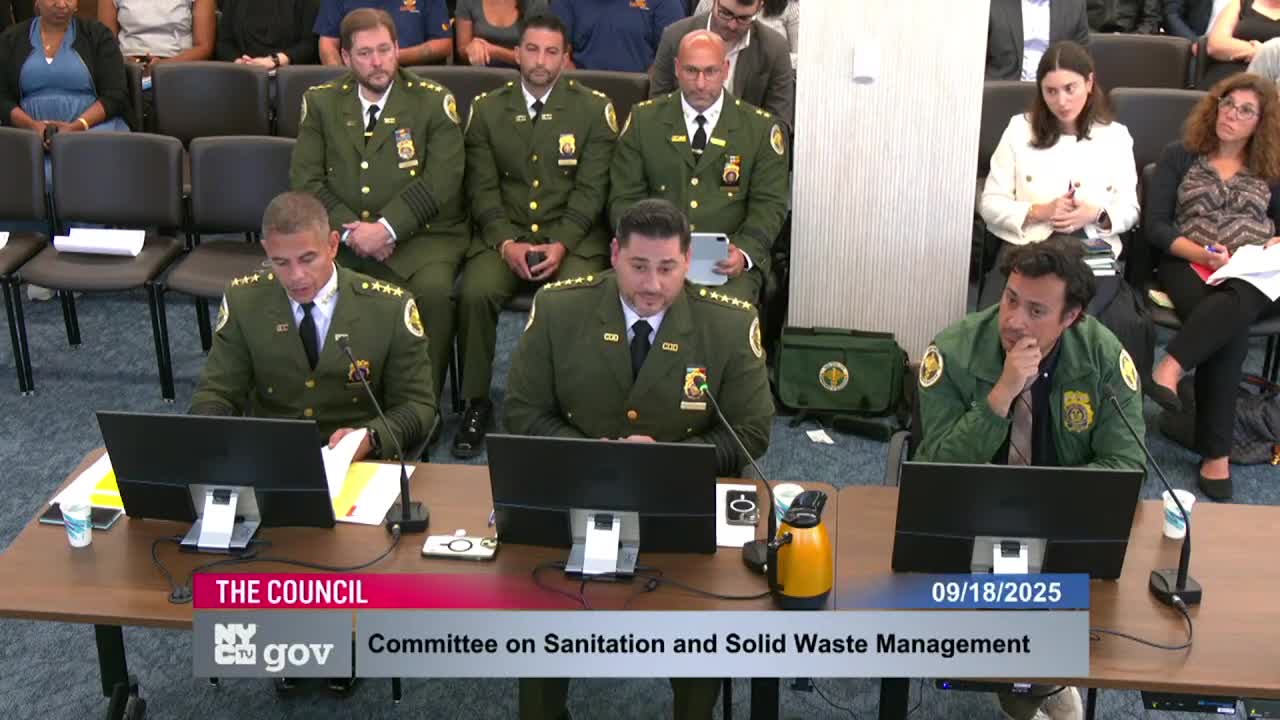NYC Sanitation Discusses New Street Cleanliness Grading Program and Pigeon Feeding Concerns
September 19, 2025 | New York City Council, New York City, New York County, New York
This article was created by AI summarizing key points discussed. AI makes mistakes, so for full details and context, please refer to the video of the full meeting. Please report any errors so we can fix them. Report an error »

In a recent oversight meeting held at New York City Hall, city officials confronted the ongoing challenges of street cleanliness, a pressing issue for residents and city leaders alike. The discussion, marked by a sense of urgency, highlighted the complexities surrounding trash management and public health in the bustling metropolis.
As the meeting unfolded, one official pointedly questioned the effectiveness of recent legislation aimed at improving street cleanliness. "What's better for public health? More trash on the streets or less trash on the streets?" he asked, emphasizing the clear preference for cleaner streets. The sentiment resonated with many, as the city grapples with the dual threats of litter and the accompanying rodent population.
A significant point of discussion was the suspension of the street cleanliness grading program, which had been a tool for assessing the state of city streets. Officials announced that the Mayor's Office of Operations has resumed field inspections and is working on a successor program, set to launch in 2026. This new initiative promises greater transparency and interagency data sharing, aiming to provide a more accurate reflection of street conditions. "There'll be more block faces rated by this new program," one official noted, indicating a broader scope for evaluation.
The meeting also addressed the issue of abandoned vehicles, with the Department of Sanitation reporting the removal of nearly 8,000 such vehicles in the past fiscal year. Additionally, officials discussed the impact of weather on street maintenance, revealing that unplanned suspensions of alternate side parking regulations were primarily due to snow and heavy rain.
A particularly vivid moment arose when a representative from the Upper West Side shared concerns about a local pigeon feeding crisis. The excess food left by well-meaning residents has attracted rats, creating a public nuisance. "What can we do to address the pigeon feeding crisis?" he implored, seeking solutions to a problem that has become emblematic of the city's broader cleanliness challenges.
As the meeting concluded, it was clear that while steps are being taken to improve street cleanliness, the path forward remains fraught with challenges. The discussions underscored a collective commitment to finding solutions, but also highlighted the need for ongoing vigilance and community engagement in maintaining the city's health and hygiene. With the new grading program on the horizon, New Yorkers are left to wonder how these changes will translate into tangible improvements on their streets.
As the meeting unfolded, one official pointedly questioned the effectiveness of recent legislation aimed at improving street cleanliness. "What's better for public health? More trash on the streets or less trash on the streets?" he asked, emphasizing the clear preference for cleaner streets. The sentiment resonated with many, as the city grapples with the dual threats of litter and the accompanying rodent population.
A significant point of discussion was the suspension of the street cleanliness grading program, which had been a tool for assessing the state of city streets. Officials announced that the Mayor's Office of Operations has resumed field inspections and is working on a successor program, set to launch in 2026. This new initiative promises greater transparency and interagency data sharing, aiming to provide a more accurate reflection of street conditions. "There'll be more block faces rated by this new program," one official noted, indicating a broader scope for evaluation.
The meeting also addressed the issue of abandoned vehicles, with the Department of Sanitation reporting the removal of nearly 8,000 such vehicles in the past fiscal year. Additionally, officials discussed the impact of weather on street maintenance, revealing that unplanned suspensions of alternate side parking regulations were primarily due to snow and heavy rain.
A particularly vivid moment arose when a representative from the Upper West Side shared concerns about a local pigeon feeding crisis. The excess food left by well-meaning residents has attracted rats, creating a public nuisance. "What can we do to address the pigeon feeding crisis?" he implored, seeking solutions to a problem that has become emblematic of the city's broader cleanliness challenges.
As the meeting concluded, it was clear that while steps are being taken to improve street cleanliness, the path forward remains fraught with challenges. The discussions underscored a collective commitment to finding solutions, but also highlighted the need for ongoing vigilance and community engagement in maintaining the city's health and hygiene. With the new grading program on the horizon, New Yorkers are left to wonder how these changes will translate into tangible improvements on their streets.
View full meeting
This article is based on a recent meeting—watch the full video and explore the complete transcript for deeper insights into the discussion.
View full meeting
